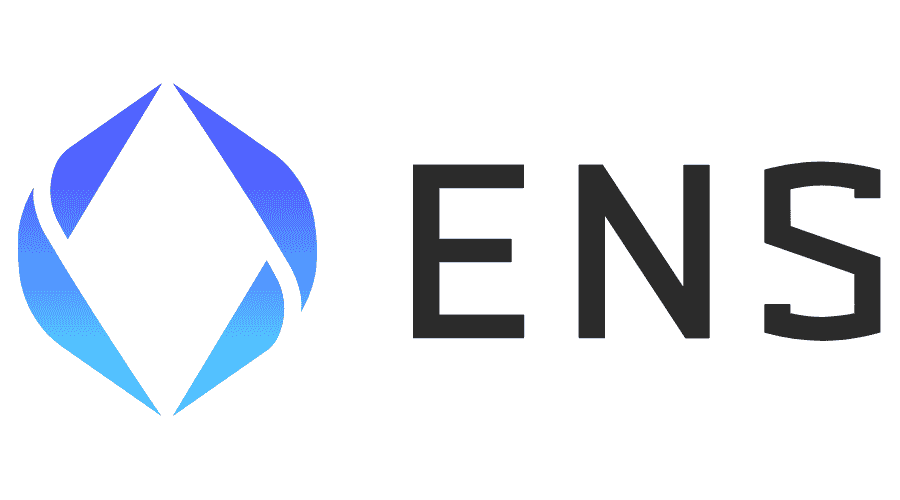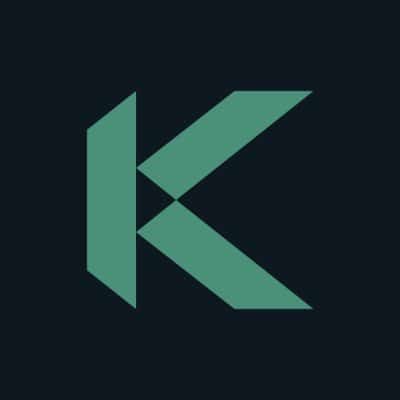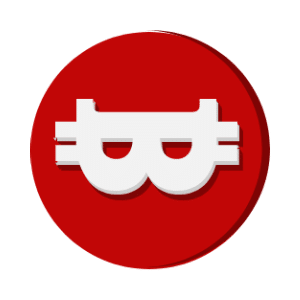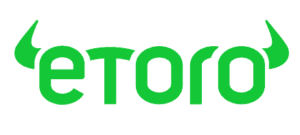The Top 10 Best Low Cap Crypto Gems for 2024

Thomas Drury
Co-Founder
Seasoned finance professional with 10+ years' experience. Chartered status holder. Proficient in CFDs, ISAs, and crypto investing. Passionate about helping others achieve financial goals.
Twitter ProfileAuthor Bio

Dom Farnell
Co-Founder
Dom is a Co-Founder and of TIC. A passionate investor and seasoned blog writer with a keen interest in financial markets and wealth management.My goal is to empower individuals to make informed investment decisions through informative and engaging content.
Twitter ProfileAuthor Bio
How We Test
At The Investors Centre, we pride ourselves on our rigorous fact-checking process. To delve deeper into our meticulous testing procedures and discover how we ensure accuracy and reliability, visit our dedicated page on how we test.
Please keep in mind that Crypto assets are volatile and currently unregulated. This volatility presents risk to your investment, and you may lose your funds. Profits from Cryptocurrency sales may be subject to Capital gains tax under UK law.
Long-Term Potential | Volatility | Risk | |
PancakeSwap (CAKE) | 4/5 | 3/5 | 3/5 |
Ethereum Name Service (ENS) | 4/5 | 3/5 | 3/5 |
Kusama (KSM) | 4/5 | 4/5 | 3.5/5 |
Kadena (KDA) | 3.5/5 | 3.5/5 | 3/5 |
Ravencoin (RVN) | 3/5 | 3.5/5 | 3.5/5 |
Ocean Protocol (OCEAN) | 4/5 | 3/5 | 3/5 |
Trader Joe (JOE) | 3/5 | 3.5/5 | 3.5/5 |
Nakamoto Games (NAKA) | 3/5 | 4/5 | 4/5 |
Solidus AI Tech (AITECH) | 3.5/5 | 3.5/5 | 3.5/5 |
Velo (VELO) | 3/5 | 3/5 | 3/5 |
Featured Broker
eToro - Best for Beginners
- Copy Trading
- Competitive Fees
- Diverse Asset Range
- Regulated & Trusted
- 30 Million+ Users
Don’t invest unless you’re prepared to lose all the money you invest. This is a high-risk investment and you should not expect to be protected if something goes wrong. Take 2 mins to learn more.
10 Best Low Cap Crypto
1) PancakeSwap - CAKE
Description
- Decentralized Exchange (DEX) on Binance Smart Chain (BSC).
- Offers low transaction fees and fast speeds.
- Features include yield farming, staking, and lotteries.
Market Cap and Performance
- Transition to “Ultrasound CAKE” for long-term value.
- Maximum supply reduced from 750 million to 450 million tokens.
- Annualized revenue of $27 million, with a fully diluted market cap of $1.14 billion.
- Price fluctuations noted; recent range between $2.51 and $2.74.
Unique Features
- Automated Market Maker (AMM) System for seamless swaps.
- Comprehensive DeFi offerings and efficient transactions.
- User-friendly for a wide audience within the crypto space.
Risks
- Risks include price volatility, smart contract vulnerabilities, regulatory changes, and competition.
Potential for 2024
Expansion of DeFi Services: PancakeSwap might broaden its DeFi offerings, incorporating innovative financial products and services that cater to an evolving user demand, further solidifying its position in the DeFi space.
Increased Blockchain Interoperability: The platform could focus on enhancing interoperability with other blockchains, facilitating smoother cross-chain transactions and attracting a wider audience.
Strategic Partnerships and Integrations: By forging new partnerships and integrating with emerging technologies and platforms, PancakeSwap can enhance its ecosystem’s utility, driving user growth and platform liquidity.

2) Ethereum Name Service - ENS
Description
- Decentralized Domain Provider: Built on Ethereum, ENS offers human-readable names for Ethereum wallet addresses.
- Simplifies Blockchain Transactions: Transforms complex hexadecimal addresses into simple names (e.g., “john.eth”), enhancing user experience.
Market Cap and Performance
- Market Capitalization: Approximately $505.8 million as of January 23, 2024, ranked #107 in the cryptocurrency market.
- Price Volatility: ENS token price around $16.47, subject to the cryptocurrency market’s inherent volatility.
- Adoption and Value: Reflects growing blockchain technology adoption, with potential for increased development and adoption in decentralized web (Web3).
Unique Features
- Human-Readable Addresses: Converts wallet addresses to easy-to-remember names, reducing transaction errors.
- Decentralization and Security: Operates on Ethereum, offering security and reducing central failure points.
- Interoperability and Ownership: Facilitates integration across Ethereum-based applications; users retain full ownership and control of their ENS names.
Risks
- Market Volatility: High volatility in cryptocurrency markets affects ENS value.
- Adoption Dependence: Value heavily reliant on widespread adoption within the Ethereum ecosystem.
- Technical and Security Risks: Faces challenges related to smart contract vulnerabilities and security issues on Ethereum.
- Regulatory Impact: Subject to evolving cryptocurrency and blockchain regulations, which could affect ENS operation and value.
Potential for 2024
- Growing Adoption: Expected to rise as the Ethereum network and crypto become more mainstream.
- dApp Integration: Anticipated wider use across decentralized applications, increasing utility and value.
- Cross-Blockchain Expansion: Potential extension to other blockchain networks, broadening use cases.

3) Kusama - KSM
Description
- “Canary Network” for Polkadot: Kusama serves as a pre-launch testing ground for Polkadot projects.
- Experimental Blockchain Platform: Offers a scalable, interoperable framework for developers, characterized by fast governance and low entry barriers.
Market Cap and Performance
- Market Capitalization: Approximately $327.25 million with a circulating supply of 8.47 million KSM tokens.
- Price Fluctuations: Experiencing significant fluctuations, with a high of $623.25 and a recent price around $34.14 as of January 23, 2024.
- Performance: Showcased rapid development, with 2020 as its top-performing year (+6,000%) and 2022 as the least (-91.67%).
Unique Features
- Rapid Development Cycle: Encourages faster project development and deployment.
- Innovation-Focused: Lower barriers to entry promote bold experimentation.
- Advanced Governance: Facilitates quick network changes and upgrades.
- Vibrant Community: Supports a strong ecosystem of developers and projects.
Potential for 2024
- High Volatility: Prone to significant price swings due to its experimental nature.
- Project Migration: Projects may move to Polkadot after initial development on Kusama, potentially affecting Kusama’s value.
- Technical Risks: Higher chance of encountering untested features or technical issues.
- Market Sensitivity: Sensitive to broader market trends, regulatory changes, and technological advancements in the crypto space.

4) Kadena - KDA
Description
- Hybrid Blockchain Platform: Combines public and private blockchain features, offering scalable, secure, high-throughput solutions.
- Chainweb Protocol: Utilizes a parallel-chain architecture for increased transaction speed and network capacity.
- Pact Smart Contract Language: Focuses on security and ease of development with formal verification capabilities.
Market Cap and Performance
- Market Capitalization: Approximately $267.34 million as of January 23, 2023, with Kadena ranked at #166.
- Price Dynamics: KDA price around $1.02, with notable fluctuations in performance over the years.
- Trading Volume: Active trading indicated by a 24-hour volume of about $9.79 million.
Unique Features
- Hybrid Blockchain Structure: Appeals to a broad audience by merging private blockchain’s security with public blockchain’s transparency.
- Chainweb Protocol: Addresses scalability and congestion, enhancing transaction throughput.
- Pact Smart Contract Language: Offers inherent security and user-friendly development, reducing smart contract vulnerabilities.
Risks
- Market Volatility: Subject to the inherent volatility of the cryptocurrency market, impacting Kadena’s value.
- Adoption Rates: The platform’s growth depends on attracting users and developers; failure to do so could limit its potential.
- Technological Competition: Faces stiff competition in the blockchain space, necessitating continuous innovation.
- Regulatory Environment: Regulatory changes could affect operations and growth, given the uncertain landscape for cryptocurrencies.
Potential for 2024
- Scalability Solutions: Kadena’s technology is well-positioned to meet the demand for scalable blockchain solutions, potentially attracting more projects and developers.
- Enterprise Adoption: The platform’s hybrid nature could see increased integration into business processes, boosting adoption among enterprises.
- Technological Advancements: Ongoing developments could maintain Kadena’s competitive edge in blockchain innovation.

5) Ravencoin - RVN
Description
- Asset Transfer Optimization: Tailored for efficient asset transfers, enabling token creation for real-world assets like securities and collectibles.
- Built on Bitcoin Fork: Uses a modified Bitcoin codebase with a focus on decentralization, user control, and privacy.
Market Cap and Performance
- Market Capitalization: Approximately $250.54 million as of January 23, 2024, ranking Ravencoin at #177.
- Price Dynamics: RVN priced at about $0.0181984, with a -20.10% decline over the past month.
- Active Trading: 24-hour trading volume around $7.02 million, indicating an engaged market presence.
Unique Features
- Asset Transfer Focus: Dedicated to the transfer of assets, setting it apart from more generalized cryptocurrencies.
- Tokenization Capabilities: Supports creating tokens representing diverse assets, enhancing its utility in asset management.
- Decentralization and Security: Adheres to PoW consensus, emphasizing resistance to censorship and centralized control.
- Community-Driven Development: Maintained by a volunteer community, contributing to its decentralized ethos.
Risks
- Market Volatility: Subject to the crypto market’s volatility, with potential for unpredictable price fluctuations.
- Niche Market Dependence: Success relies on adoption within the still niche market of asset tokenization.
- Competitive Landscape: Faces challenges from other platforms focusing on asset tokenization, which may offer more features or stronger backing.
- Regulatory Landscape: Evolving regulations for tokenized assets could affect Ravencoin’s adoption and functionality, especially across different jurisdictions.
Potential for 2024
- Growth in Asset Tokenization: Anticipated increase in significance as tokenizing assets becomes more prevalent.
- Expanding Partnerships: Potential for broader adoption through partnerships across sectors benefiting from asset tokenization.
- Blockchain Advancements: Ongoing technological developments could improve asset management capabilities, attracting more users.

6) Ocean Protocol - OCEAN
Description
- Blockchain-based Data Sharing: Focuses on secure, efficient exchange of data and data services, utilizing smart contracts for transparency and control.
- Data Monetization Ecosystem: Enables data providers and consumers to monetize and share data assets securely, targeting AI and Web3 applications.
Market Cap and Performance
- Market Capitalization: Approximately $231.38 million as of January 23, 2023, with a circulating supply of 568.38 million OCEAN.
- Price Dynamics: OCEAN priced at around $0.4071, reflecting the volatility typical of the cryptocurrency market.
- Innovative Platform Features: Includes datatokens and data NFTs for secure data asset monetization.
Unique Features
- Data Marketplace: A decentralized platform for publishing, discovering, and consuming data, granting data owners control over access and terms.
- Tokenized Data Assets: Allows for data tokenization, facilitating secure sale and sharing of data with traceability and verification.
- Privacy and Security: Emphasizes data privacy and secure sharing, adhering to standards and regulations.
Risks
- Market Volatility: Subject to the cryptocurrency market’s fluctuations, affecting token value and platform stability.
- Adoption and Growth: Success depends on widespread adoption and building a robust network of users and data providers.
- Regulatory Challenges: Operates in a regulatory-sensitive domain, with potential impacts from changes in data sharing laws.
- Competitive Landscape: Faces competition from both blockchain-based and traditional data sharing platforms, necessitating continual innovation to stay ahead.
Potential for 2024
- Increased Data Utilization Demand: Growth in big data and AI sectors could drive wider adoption and platform activity.
- Partnership Expansion: Broadening its partnership network can enhance utility and attract a diverse user base.
- Advancements in Data Tokenization: Ongoing technological improvements could refine platform features, boosting efficiency and security.

7) Trader Joe - JOE
Description
- Comprehensive DeFi Platform: Operates on the Avalanche blockchain, integrating a DEX with liquidity provision, lending, and other services.
- Innovative and User-Friendly: Aims to simplify DeFi engagement through an accessible interface, catering to a wide user base.
Market Cap and Performance
- Market Capitalization: Approximately $101.58 million as of January 23, 2024, with a circulating supply of 362.80 million JOE tokens.
- Price Dynamics: JOE token holders priced around $0.42, subject to the inherent volatility of the cryptocurrency market.
- Avalanche Ecosystem Integration: Secured by Avalanche’s consensus, emphasizing rapid innovation and a community-first approach.
Unique Features
- Integrated DeFi Services: Offers a unified platform for swapping, staking, yield farming, lending, and borrowing.
- Native Token JOE: Central to governance and incentivization within the ecosystem, facilitating staking rewards and voting on proposals.
- User-Centric Design: Balances ease of use with advanced functionalities to accommodate both novices and experienced DeFi users.
Risks
- Market Volatility: High susceptibility to crypto market fluctuations, affecting token value and platform stability.
- Technical and Security Risks: Faces challenges related to smart contract vulnerabilities and security breaches, critical for maintaining trust and integrity.
- Competitive Landscape: The crowded DeFi space demands constant innovation to stay ahead of similar service providers.
- Regulatory Uncertainty: Changes in the regulatory environment could impact DeFi operations, posing a significant risk to platforms like Trader Joe.
Potential for 2024
- DeFi Sector Growth: Potential expansion of services and user base amidst the evolving DeFi landscape, leveraging the growth of the Avalanche ecosystem.
- Innovative DeFi Products: Continual development of new DeFi offerings could attract diverse users and enhance market position.
- Strategic Collaborations: Partnerships with other blockchain projects or integration with new protocols could increase utility and appeal.

8) Nakamoto Games - NAKA
Description
- Blockchain-based Gaming Ecosystem: Offers play-to-earn games on the Ethereum network, integrating blockchain technology for a decentralized gaming experience.
- Inclusive Platform: Enables game developers to launch their games and provides players access to a diverse game library.
Market Cap and Performance
- Market Capitalization: Approximately $107.75 million as of January 23, 2024, with a circulating supply of 80.46 million NAKA tokens.
- Price Dynamics: NAKA priced around $1.23, experiencing a -22.22% decrease over the last month, indicative of cryptocurrency market volatility.
- Gaming Sector Influence: Reflects broader market trends and the evolving landscape of blockchain gaming.
Unique Features
- Diverse Gaming Ecosystem: Features a wide range of play-to-earn games, catering to various interests and gaming styles.
- Play-to-Earn Model: Players can earn cryptocurrency rewards, differentiating it from traditional gaming models.
- Developer Platform: Offers opportunities for game developers to enter the crypto market and benefit from the ecosystem.
Risks
- Market Volatility: Subject to fluctuations in the cryptocurrency market, affecting platform stability and player earnings.
- Competitive Landscape: Faces challenges from both traditional and blockchain-based gaming platforms.
- Regulatory Uncertainties: Evolving regulations around cryptocurrencies and gaming could impact operations and growth.
- Community Dependence: Success relies on building a strong community of players and developers, crucial for long-term viability.
Potential for 2024
- Play-to-Earn Market Expansion: Potential for user base growth and enhanced game offerings as the play-to-earn concept gains popularity.
- Technological Advances: Opportunities to leverage blockchain advancements for new features and improved gaming experiences.
- Ecosystem Growth through Collaborations: Strategic partnerships can broaden the gaming experience and attract a wider audience.

9) Solidus AI Tech - AITECH
Description
- AI and Blockchain Integration: Aims to create a decentralized ecosystem for AI services, leveraging blockchain for secure and transparent transactions.
- Industry-Wide Applications: Targets a broad range of sectors for AI solution implementation, emphasizing accessibility and efficiency.
Market Cap and Performance
- Market Capitalization: Approximately $20.616 million as of January 23, 2024, with a circulating supply of 398.42 million AITECH tokens.
- Price Dynamics: AITECH priced at $0.0521, reflecting the market’s volatility and the evolving blockchain and AI technologies landscape.
- Service Offerings: Focuses on AI as a Service (AIaaS) and Blockchain as a Service (BaaS), providing high-performance computing resources.
Unique Features
- Decentralized AI Marketplace: Offers a platform for AI service transactions, promoting a democratic access to AI technologies.
- Accessibility Focus: Aims to make AI solutions more accessible to a wider audience, including small to medium enterprises.
Risks
- Market Volatility: Susceptible to the inherent volatility of the AI and blockchain markets, affecting stability and investor confidence.
- Adoption and Technical Challenges: Success hinges on widespread adoption and overcoming technical barriers to meet diverse user needs.
- Competitive Sector: Faces stiff competition in the AI and blockchain arenas, necessitating continuous innovation to maintain market position.
- Regulatory Uncertainties: Must navigate the complex regulatory environment surrounding AI and blockchain, with potential impacts on operations and growth.
Potential for 2024
- AI Technology Demand: Positioned to capitalize on the increasing demand for AI solutions across various industries, potentially expanding its user base.
- Innovative AI Solutions: Potential for developing advanced AI applications, enhancing machine learning and data analysis capabilities.
- Strategic Partnerships: Opportunities for collaboration with tech and AI industry leaders to enhance service offerings and market reach.

10) Velo - VELO
Description
- Blockchain Financial Protocol: Aims to transform the financial and business sectors with digital credit issuance and borderless asset transfers.
- Focus on Remittance and Payments: Targets efficiency improvements in financial processes through blockchain technology.
Market Cap and Performance
- Market Capitalization: Approximately $34.645 million as of January 23, 2024, with a circulating supply of 7.39 billion VELO.
- Price Dynamics: VELO priced at around $0.0046, indicative of the volatile nature of the cryptocurrency market.
- Innovative Credit Exchange Network: Utilizes the Stellar Consensus Protocol for secure and transparent value transfers.
Unique Features
- Digital Credit Issuance: Facilitates the creation of digital credits backed by collateral, pegged to fiat currencies for versatile financial transactions.
- Borderless Transactions: Enhances cross-border asset transfers, aiming to reduce costs and improve efficiency in international finance.
- Financial Ecosystem Integration: Seeks to complement existing financial systems with blockchain efficiency and accessibility.
Risks
- Market Volatility: Subject to the fluctuations of the crypto market, impacting token value and platform stability.
- Financial Sector Adoption Challenges: Success depends on overcoming regulatory and competitive barriers in the financial industry.
- Fintech Competition: Faces stiff competition from numerous blockchain and fintech solutions targeting financial services efficiency.
- Regulatory Landscape: Navigating the complex regulations of financial services and blockchain technology poses significant challenges for growth and operation.
Potential for 2024
- Expansion in Financial Services: Anticipated growth driven by blockchain adoption in remittances and payments, expanding user and use case range.
- Transactional Innovations: Potential for new features or enhancements in digital credit and asset transfer functionalities.
- Strategic Financial Partnerships: Opportunities to bolster market presence through collaborations with financial institutions and fintech firms.

What are Low Cap Cryptocurrencies?
Low cap gems refer to digital assets with a relatively small market capitalization. In the expansive universe of cryptocurrencies, these are often akin to the small or micro-cap stocks in the traditional stock market. Typically, a cryptocurrency with a market capitalization of less than $1 billion is considered a low cap crypto, although this threshold can vary based on market dynamics.
The Significance in the Market:
Niche Innovation: low market capitalization cryptocurrencies often represent emerging projects that focus on niche innovations or novel applications within the blockchain space.
Growth Potential: Due to their smaller size, these cryptocurrencies have a higher potential for growth compared to more established, large-cap cryptocurrencies.
Market Diversity: They contribute to the diversity of the cryptocurrency market, offering a broader range of investment opportunities and technologies.
Benefits of Investing in Lower Cap Cryptocurrencies:
High Growth Potential: Investors are often attracted to lower cap cryptocurrencies for their potential to yield high returns. A small increase in demand can significantly impact the price, leading to potentially higher profits.
Innovation and Novelty: These cryptocurrencies are usually at the forefront of technological innovation, exploring new use cases for blockchain technology.
Lower Entry Cost: Lower market caps often mean a lower price per token, making it easier for investors to acquire a substantial number of tokens without a significant promising investment.
Risks Associated with Investing in Low Cap Cryptocurrencies:
High Volatility: They are subject to high volatility. Prices can experience substantial fluctuations in a short period, which adds to the investment risk.
Liquidity Concerns: Low cap gems may suffer from liquidity issues, making it challenging to buy or sell large quantities without impacting the market price significantly.
Lesser Known and Unproven: Many of these projects are lesser-known and unproven in the market. There’s a higher risk of project failure, fraud, or abandonment.
Market Sensitivity: These cryptos can be more sensitive to market sentiment and can be influenced by speculative trading.
Investing in lower cap cryptocurrencies requires a careful approach. While the potential for high returns is an attractive aspect, it’s important for investors to do thorough research, understand the technology and the team behind the project, and consider the market trends and risks before making any investment decisions. As with any high-risk investment, diversification and risk management are key strategies to consider.
Where to buy low cap crypto?
OKX exchange, formerly known as OKEx, is a prominent cryptocurrency exchange that offers a platform for trading various digital assets, including Bitcoin, Ethereum, and a wide range of altcoins. It’s known for its comprehensive suite of trading options, including spot and derivative trading, which caters to the needs of both beginners and experienced traders.
Features of OKX Exchange:
Diverse Trading Options: OKX provides a variety of trading options including spot trading, futures, options, and perpetual swaps, appealing to a broad range of trading strategies.
High Liquidity: The exchange is known for its high liquidity, which facilitates easier and faster trading of cryptocurrencies.
Security: OKX places a high emphasis on security, employing advanced technologies to ensure the safety of users’ funds and data.
User-Friendly Interface: The platform is designed to be user-friendly, catering to both novice and experienced traders with its intuitive design and comprehensive trading tools.
Global Accessibility: OKX services a global audience, offering a range of languages and customer support to cater to users worldwide.
Why OKX is Suitable for Trading Lower Cap Cryptocurrencies:
Wide Range of Listings: OKX is known for listing a broad array of cryptocurrencies, including many low cap options, providing traders with access to a wide range of potential investment opportunities.
Advanced Trading Tools: The exchange offers advanced trading tools and features, such as detailed charts and analysis tools, which are essential for the research and analysis required when dealing with volatile small cap cryptocurrencies.
Strong Community and Support: The platform has a strong community presence and offers robust customer support, which can be particularly useful for traders new to the low cap cryptocurrency market.
Educational Resources: OKX provides educational materials and resources that can help investors make informed decisions, especially important in the high-risk environment of low market cap cryptos.
In summary, OKX’s combination of a wide range of trading options, strong security measures, user-friendly interface, and global accessibility make it a suitable platform for traders interested in exploring the potential of small cap cryptocurrencies.
You may also be interested in our Crypto vs series, OKX vs Coinbase, OKX vs MEXC, Coinbase vs MEXC. and OKX vs Kraken.
FAQs
Yes, you can find hidden gems in low cap crypto by analyzing market trends, examining the unique features of cryptocurrencies, and keeping an eye on emerging players with significant growth potential.
A low market cap crypto is typically defined by its smaller market capitalization compared to more established cryptocurrencies. They often offer high growth potential but come with higher volatility and risks.
When considering the total supply and token supply, evaluate the potential for dilution, market demand, and how reward token supply dynamics could affect the token price over time.
Investing in small cap cryptocurrencies often leads to high risk and high reward scenarios due to their volatile nature and potential for significant price movements.
Crypto enthusiasts should understand that market caps can indicate the relative size and stability of a cryptocurrency. Lower market caps often mean higher risk and potentially higher reward, but also greater susceptibility to market fluctuations.
Featured Blogs
Gain Access to the #1 Market Leading Investing Platform
Don’t invest unless you’re prepared to lose all the money you invest. This is a high-risk investment and you should not expect to be protected if something goes wrong. Take 2 mins to learn more.


